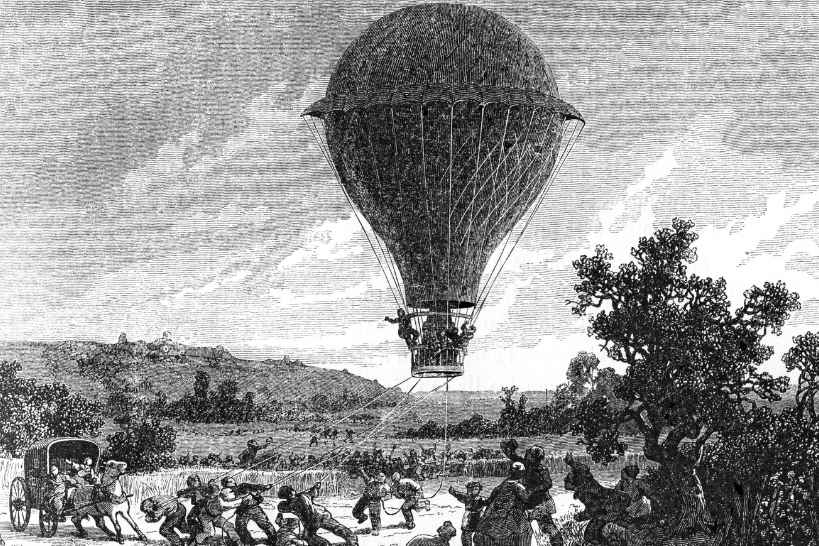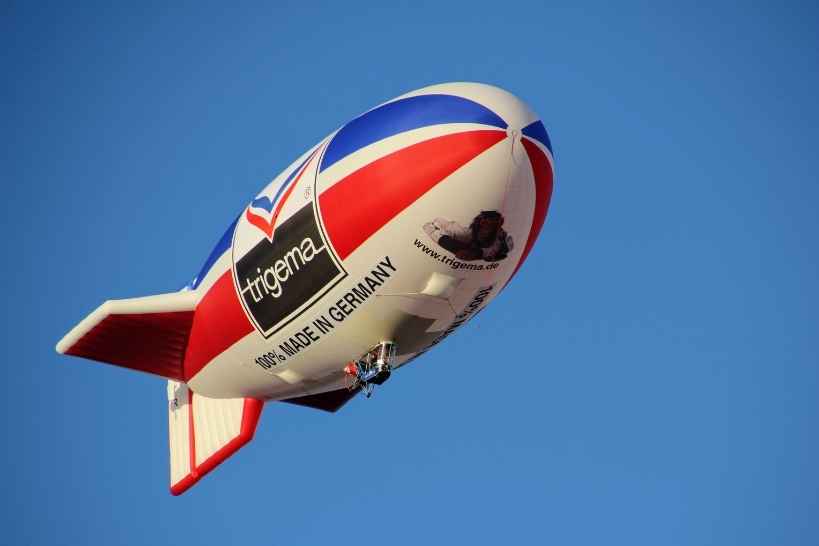The History Of Hot Air Balloons & Travel – Our Guide
After 1783 when the first hot air balloon flight took off across Paris, many people looked to hot air balloons for their purpose, with some expecting them to be the new transport for travel across the world.

Historically, hot air balloons were only used for short travel distances, due to numerous incidents with hydrogen hot air balloons, lack of knowledge and the fact that gas was expensive, however, long-distance travel has been completed with hot air balloons before, with Steven Fossett who managed to circumnavigate the globe in one in 2002.
To find out more about the history of hot air balloons, attempts of using them for travel, other usages of hot air balloons and why we don’t travel with them, we’ve put together a guide with everything you need to know below.
Where Did Hot Air Balloons Come From?
Before we get into the history of hot air balloons and travel, let’s discuss where hot air balloons came from first and how they were invented. The first hot air balloon to fly came from the Montgolfier brothers in 1783, it flew across Paris and the balloon was made from paper and silk.
History says the manned flight managed to go up to 500 feet and travelled 5.5 miles before the balloon landed, Francois Pilatrê de Rozier and Francois Laurent hand-fed fire to the ballon during the 25 minutes of travel.
Historical Attempts Of Hot Air Ballooning & Travel
After the first hot air balloon ride, many people were inspired to push hot air balloon travel further, creating gas air balloons and more.
We’ve listed a timeline to explain the historical travel attempts of hot air ballooning below.
- December 1st 1783 – Ten days after the Montgolfier brothers flew their hot air balloon, Jacques Alexander Charles and Nicholas Louis Robert flew their hydrogen gas balloon, this flight was successful and flew for 25 miles covering 2 and a half hours before landing. Gas balloons from then onwards were used for short travel for those who could afford them.
- 1785 – In 1785, a man called Pilatre de Rozier who was one of the first to fly balloons attempted to cross the English Channel in a gas balloon to prove they could be used for long haul flying, this attempt failed however as they used hydrogen balloon gas and hot air which exploded, later this year it was completed by Jean-Pierre Blanchard and American John Jeffries with a gas balloon.
- 1793 January 9th – The first hydrogen gas balloon took off from Philadelphia, it ascended to 15,800 feet and hot air ballooning became popular in America for short flights during the civil war, only gas balloons were used during this time.
- The 1900s – In the 1900’s airships started to take off, they were based on a cigar-shaped hot air balloons with an engine and propellers to help control the flight. These were used much more during wars and for long haul flights, with the largest one being called Van Zeppelin which was up to 420 feet long with luxury passenger areas.
- 1937 May 6th – One of the largest airships called the Hindenburg caught fire in less than a minute when landing, after this incident hydrogen started to become more dangerous and expensive, airships were used much less for flying.
- The 1960s – In the 1960’s Raven Industries was created, it developed the modern hot air balloon with a propane gas burner and travelled 25 minutes for a distance of 3 miles, this was then taken by Yost and Piccard across the English Channel to prove it’s distance flying.
- 1963 – Sport ballooning started to take off at this point, the US made U. S. National Hot Air Balloon Championship events, thanks to the new technology of gas burner balloons, gas balloons were still around at this point but were very expensive to run so less popular.
- The 2000s and beyond – From the 2000s till now great developments have been made with hot air ballooning and travel, around the globe, flights have been accomplished by mixing helium and hot air while NASA’s gas balloons study the earth and provide essential communication for experiments when the project is done the envelope simply closes and it falls back to the ground.

Essential Facts About The Usage Of Hot Air Balloons
Now we know all about hot air balloons and travel, let’s move on to some essential facts about hot air balloons and how they were used.
- Hot air balloons were very important during the civil war – Hot air balloons were very important during the civil war for artillery and spotting, these were then used for signalling with flags and essential telegraphs.
- Champagne isn’t because of a celebration – Although many think champagne is to celebrate the balloon craze, it’s not, the tradition stemmed from the time that the Montgolfier brothers were testing their balloons and they would land in farmers’ fields, they would offer the champagne in exchange for ruining their crops.
- The Chinese invented hot air balloons – Many people forget that the Chinese had hot air balloons figured out a very long time ago, they had been experimenting with hot air balloons and buoyancy since the 3rd century BCE, this was in the form of an airborne lantern.
- You can’t fly hot air balloons in the rain – Rains make hot air balloons much harder to control, lots of water on top of the balloon also makes it heavier which uses more fuel. This is why hot air balloon flights tend to be restricted to sunny days.
- There are now glass-bottom hot air balloons – Yep, we know, there are now glass-bottom hot air balloons, they are not for everyone however since they can be quite nerve-wracking at high heights.
Why Don’t We Travel Long Distance With Hot Air Balloons?
Since modern hot air balloons are now much safer, durable and can travel longer distances, why don’t we use them as an alternative for flying?
Well, there are many reasons as to why we don’t use hot air balloons for travel, one of them being balloon machines are flown with the wind, meaning you don’t have control over where your balloon trip will land.
We’ve listed some other factors as to why we don’t use hot air balloons for travel below.
- Cost – Balloons are typically reserved for special occasions due to their high cost, using a balloon for simple travel would simply be too expensive since you also have to pay for the pilot and ground station for landing.
- Weather – As we’ve mentioned above, applications of balloons in the air are very sensitive to weather, potentially flights could be held up for days or even weeks if conditions don’t improve which is impractical for travel.
- Speed – Hot air balloons do not travel fast, much slower than the standard car, therefore are not the ideal choice for getting to a faraway destination quickly.
- Availability – Hot air balloons are not widely available like cars and planes, making them unsuitable as a widespread transit option.
Frequently Asked Questions About Balloons & Travel
Are hot air balloon crashes often?
No, hot air balloon crashes are rare, most happen due to pilot error, hot air balloons are considered safer than cars and planes.
What is the furthest a hot air balloon has travelled?
The furthest a hot air balloon has travelled is 5,209 miles which was from Japan to Mexico.
Does wind affect how a hot air balloon travels?
Wind is a big factor which affects how hot air balloons travel, it changes the speed as well as the direction. Hot air balloons fly best in stable winds.
What are the top destinations in the world to do hot air ballooning?
Some top destinations to travel to for hot air ballooning are Cappadocia, Serengeti, Luxor in Egypt and Bagan, Myanmar.
Why did hot air balloon airships fail?
Airships failed due to the danger as well as the fact they were very expensive to build and helium was also expensive, airships themselves were also very expensive to build.

Final Words
Overall, hot air balloons have been trialled over and over again for travel and were used as a main travel source for the rich and military during the civil war, hot air balloons till now are not used for travel due to fuel being very expensive, they also have lack of control since their course is determined by the wind.
I’m Annie, a twenty-something year old girl who loves hot air balloons. So much so, that I have a full time job as a Flight Instructor and it is all I love talking about. Something about being up there in the elevated altitudes helps all my stresses float away!